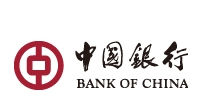Hot briquetted iron
The core product of the company: Hot-pressed iron blocks - efficient and environmentally friendly recycled resources of steel solid waste.
Product Essence and Value:
Hot-pressed iron blocks are high-value-added products developed by our company in the field of solid waste resource utilization in steel enterprises, based on core technologies. They are mainly made from metallurgical solid wastes that are difficult for steel enterprises to process and dispose of. Through advanced processes, these wastes are transformed into high-quality, low-impurity steelmaking furnace materials, achieving efficient and circular utilization of waste resources.
Core raw materials and pretreatment:
After the raw materials enter the factory, they undergo strict radiation detection, sorting, crushing, screening, raw material inspection, magnetic separation, batching and other processes to extract particle steel with high iron content, few impurities and low content of harmful elements, laying a foundation for the subsequent production of high-quality iron blocks.
A rigorous quality control system:
To ensure product quality and environmental compliance, the company has established a strict quality control system covering the entire production process of hot-pressed iron blocks. This system includes key steps such as incoming raw material inspection, mixing process inspection, in-line production inspection, and finished product inspection. Relying on the strong testing capabilities and R&D strength of the company's technology center, each step is strictly controlled to ensure that every hot-pressed iron block meets the set quality standards and always aligns with national environmental protection policy guidelines.
Advanced and environmentally friendly production process:
Raw material storage and feeding:
After the raw materials enter the factory, they are unloaded into the indoor raw material warehouse for storage.
The raw materials that have undergone magnetic separation are scientifically proportioned and premixed, and then enter the mixed material silo.
The materials are sent into the upper hopper by forklifts and then conveyed to the elevator through the belt. Through the closed elevator and belt conveyor system, the materials are transported to the feeding port of the rotary kiln. The entire storage and transfer process takes place in a closed material shed, which is equipped with top sprinkler facilities to effectively control dust and prevent pollution.
2. Segmented calcination in rotary kiln:
The mixed raw materials enter the rotary kiln through the feed inlet.
The materials move within the kiln along the inclined angle, undergoing a staged temperature-controlled calcination process that includes a low-temperature section (preheating and dehydration) → a medium-temperature section (approximately 200°C) → a high-temperature section (heating up to approximately 800°C).
The material that has been calcined to a bright red state is immediately discharged into a sealed heat preservation and collection device, effectively locking in the heat and preventing oxidation.
3. Die Casting and Finished Product Treatment:
The materials after high-temperature calcination are pressed into shape by a press to obtain hot-pressed iron blocks with neat appearance, high strength, high density and stable elemental indicators.
The finished hot-pressed iron blocks are conveyed to the finished product warehouse by chain plate machine.
The significant advantages of hot-pressed iron blocks:
1. Stable chemical composition:
Ensure that the composition is controllable during the steelmaking process.
2. High purity, environmentally friendly and harmless:
It has low contents of carbon (C), phosphorus (P), sulfur (S), etc., few impurities and almost no elements harmful to steel, making it a clean raw material for steelmaking.
There is no oil fume or dust produced during the steelmaking process, which is environmentally friendly.
3. High grade and high recovery rate:
It effectively increases the yield of metals, significantly reduces production costs, and has a prominent cost-performance advantage among similar products.
4. Accelerate the smelting pace:
With high and uniform bulk density, it increases the comprehensive loading volume, which helps shorten the smelting time and improve production efficiency.
The core advantages of hot-pressed iron blocks (HBI):
Green and low-carbon
Significantly reduce smelting waste residue and carbon emissions, in line with the national "dual carbon" strategy.
The production process is free of flux and meets the VOCs emission standards.
2. Strengthen smelting, increase production and reduce consumption:
High metallization rate, direct charging into the furnace reduces reduction heat consumption.
Improve the permeability of the soft-melting zone in the blast furnace burden column and enhance the smelting process.
Increase blast furnace output, significantly reduce coke consumption and costs.
3. Improve anterograde movement:
Optimize the performance of the furnace charge droplets and reduce the pressure difference in the lower and middle parts of the blast furnace.
Enhance the permeability and fluidity to ensure the stable and smooth operation of the blast furnace.
Enhance the activity of the hearth and its air intake capacity.
4. Resource Recycling:
Recycle and reuse waste metals (particle steel) to reduce the consumption of primary minerals.





